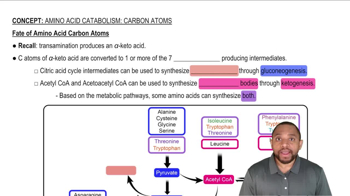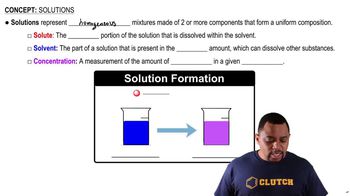Multiple Choice
Draw the open-chain structure to complete the mutarotation of D-mannose.
 Verified step by step guidance
Verified step by step guidance Verified video answer for a similar problem:
Verified video answer for a similar problem:



 2:1m
2:1mMaster Mutarotation Concept 1 with a bite sized video explanation from Jules
Start learning